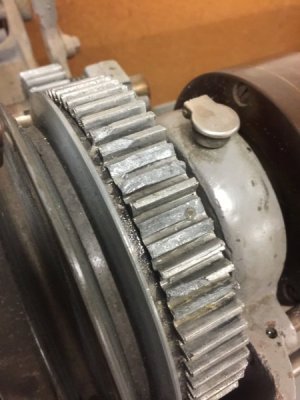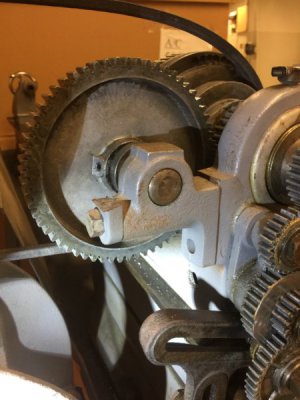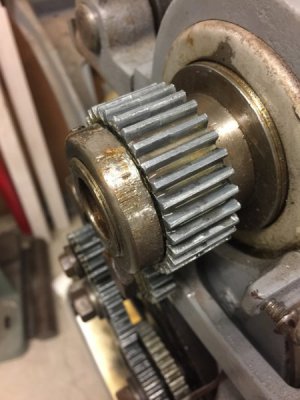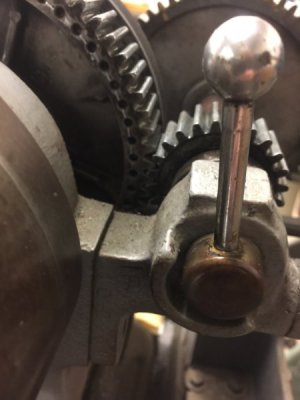- Joined
- Dec 21, 2017
- Messages
- 12
So, this happened....
I've been working on getting an Atlas 10" lathe back into running condition after it had suffered from a tip over and sat basically unused for over 20 years. I had just finished cleaning some gummy deposits out of the gear teeth in the headstock and back gears with a brass brush and thought I’d check the freedom of rotation with the back gear set engaged. I pulled the locking pin, engaged the gear then manually turned the headstock through a few rotations using the chuck. It moved easily with the exception of one slightly tight spot. It rotated through a little easier each time, so I returned to the original configuration. Then to my horror, I spotted a chipped tooth on what was before a basically perfect gear. And then...utter despair when teeth started dropping off one after another.
I've got a replacement part on the way and have been reviewing the spindle removal procedure on YouTube. I'm fairly confident I can get the replacement part in, but the larger question is: Why did this happen in the first place? I really don't want a repeat occurrence.
I'm hoping some of the members here might have some ideas or thoughts on the subject.

I've been working on getting an Atlas 10" lathe back into running condition after it had suffered from a tip over and sat basically unused for over 20 years. I had just finished cleaning some gummy deposits out of the gear teeth in the headstock and back gears with a brass brush and thought I’d check the freedom of rotation with the back gear set engaged. I pulled the locking pin, engaged the gear then manually turned the headstock through a few rotations using the chuck. It moved easily with the exception of one slightly tight spot. It rotated through a little easier each time, so I returned to the original configuration. Then to my horror, I spotted a chipped tooth on what was before a basically perfect gear. And then...utter despair when teeth started dropping off one after another.
I've got a replacement part on the way and have been reviewing the spindle removal procedure on YouTube. I'm fairly confident I can get the replacement part in, but the larger question is: Why did this happen in the first place? I really don't want a repeat occurrence.
I'm hoping some of the members here might have some ideas or thoughts on the subject.
- The bull gear is the only one out of the four that has any kind of damage (naturally).
- I'll be looking at the engagement mechanism a little more closely today. Seems like it's a pretty tight mesh when engaged.
- Is it possible that the Zamac material could have degraded? If so, there's concern for the whole machine.
- I'm having a hard time believing that something could have been bent (vs broken) in the fall, but will also look into that.



 .
.


